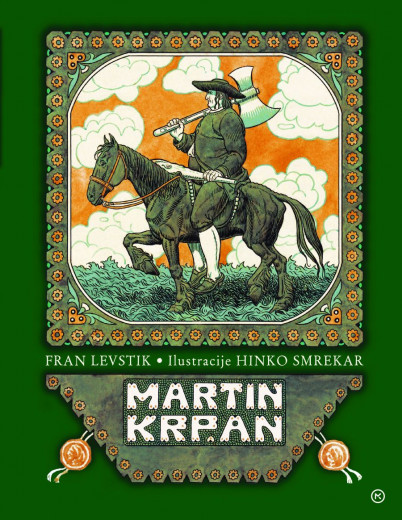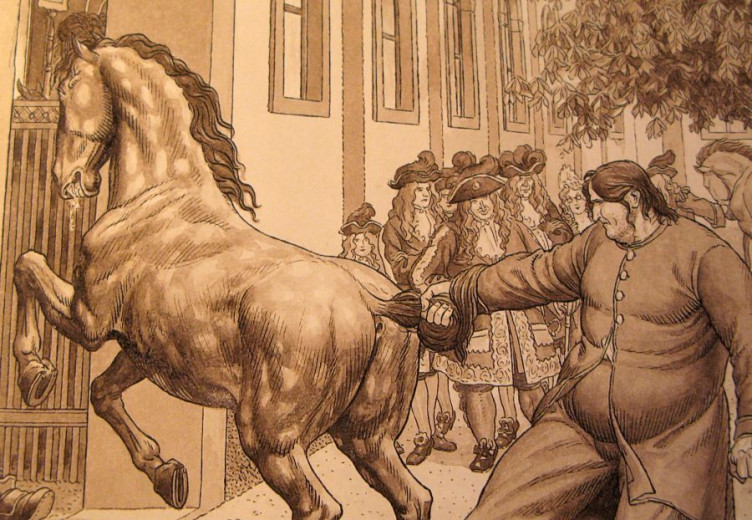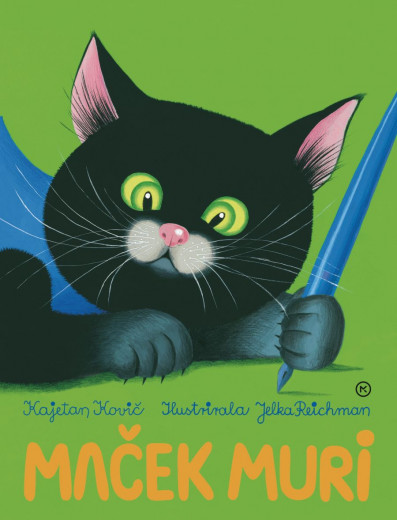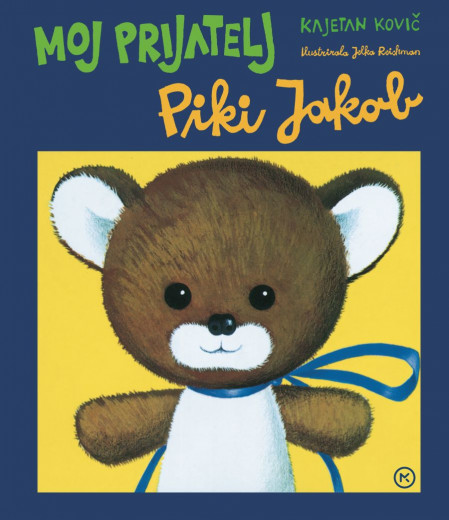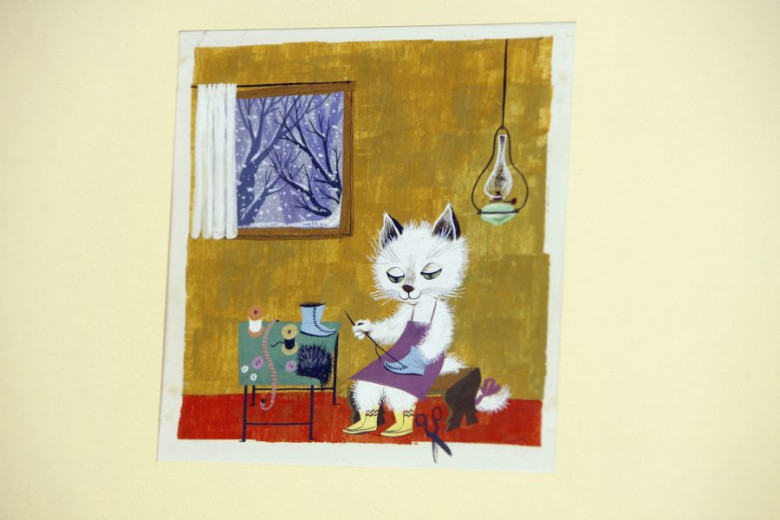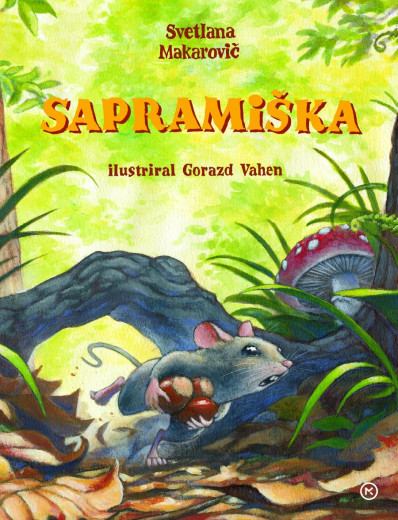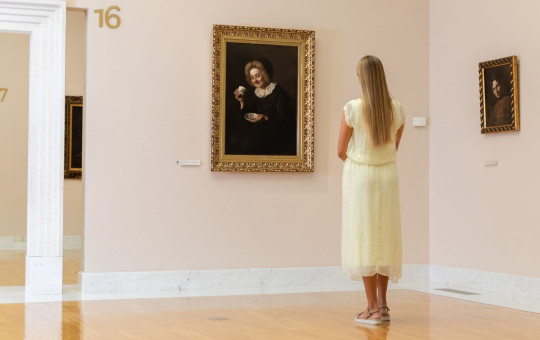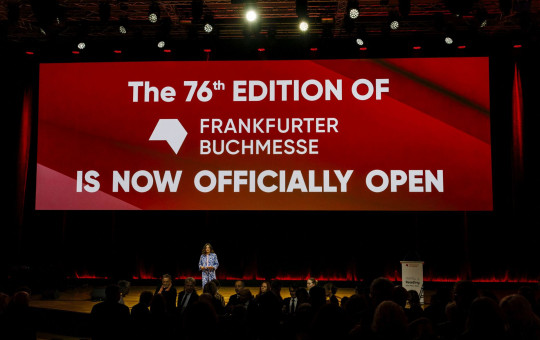The biggest Slovenian publisher, Mladinska knjiga, publishes 40 illustrated children’s books a year. Famous Slovenian authors and book artists have worked with Mladinska knjiga to create and render in visual images an entire animal kingdom of literary heroes, among whom those with highest cult status include the Slovenian bear Piki Jakob, Muri the cat and Sapra the mouse. But special status is reserved for the oldest of them all – the Slovenian salt smuggler Martin Krpan.
In 2017 we were celebrating one hundred years of Slovenian picture books. The first one is considered to be Martin Krpan by Fran Levstik, with illustrations by the painter Hinko Smrekar.
First picture book was Martin Krpan
As befits such an old picture book, it was printed and published in the form of a small binder. But that was with poor-quality paper and ink, which has now faded a lot, and the paper has gone quite brown. However, the text is elaborate and perfectly structured, and the illustrations are true works of art, made with great effort, knowledge and talent.
When I learned about the format of the originals, which are a full 38 cm high, it was clear that Smrekar drew the illustrations as true paintings and that they were not just images knocked off to earn a penny.
Masterfully laid out, full of detail, beautifully executed and above all, authentic Smrekar. The ambition evident in these pictures is breathtaking. There are no compromises apparent in the creation of the project, but rather an extraordinary commitment to it becoming a true cultural event.
This picture book is incontrovertibly a Slovenian national monument, and I believe that Levstik and Smrekar would not grudge us the pride we take in "using" the book. This work is an example of the relationship of the artist with the particular field of work, which began with Krpan and has not let up, even in today’s production.
We could say that this spirit still pervades Slovenian illustration, if not even more so today.
That book was followed by others and many more, especially after the Second World War with the founding of Mladinska knjiga publishing. The first editor, Kristina Brenk, set the standards and rules for work which are still applied today.
Her motto, that only the best is good for children, was possibly an unconscious influence on these protobooks.
Those of us who work today in children’s publishing are just protecting the Holy Grail that is the creative atmosphere and unquestionably uncompromising quality, along with how each author is competing with themselves. The most interesting aspect is that among these creative people there is no sign of envy or disagreeable competitiveness. The environment is unusually homogeneous. I myself explain this mainly by the fact that each author can develop their own style, and in this way they are no threat to others.
At international book fairs we often hear praise and admiration for how superb the quality is and how such diverse authors are working in such a small cultural arena or book market. But this involves the conscious cultivation of a diversity of aesthetics. Even the most successful type, which we would like to exploit commercially as much as possible, mutates into the next phase, which is worthy of support, since we are counting on it being even better than the previous one. And often enough it is.
Their creators receive international attention and awards. The export of copyrights has in just a few years attained multiples of the success years ago. Each publisher wants new, unusual and innovative works. Under certain conditions one could say this is a kind of trend in global children’s book production. But it was not always this way. In Slovenia, too, we have felt the pressure of capital in terms of producing cheaper products that might bring in cash more quickly. This is a pressure which would constrain the imagination of authors and illustrators, and kowtow to some imaginary trends or some "average buyer," although no one can define what or who that is. But these attempts have very quickly been shown to be unsuccessful. Those of us who advocate for individuality and autonomy of artistic style have succeeded in demonstrating to the business people that outstanding quality and originality are supremely bankable qualities, and that long-term financial success lies in just such an approach.
In a small market of two million potential buyers of picture books we have plenty of titles that have been reprinted, even after 60 years or more.
Some exceptional titles have enjoyed print runs of over 150,000 (for instance Martin Krpan, with illustrations by Tone Kralj, achieved a record of more than 240,000 copies sold), which is undoubtedly a phenomenon worthy of comparison with the success of Harry Potteron the Slovenian market.
Another unusual phenomenon is that adult buyers wander into bookshops to buy books for themselves simply because they are outstanding works of art. And that phenomenon is growing. But in truth that is not so strange.
Imagine an adult who was exposed to reading superb picture books as a child. That influence is enormously powerful in the formative years, and remains so throughout life.
When those children become parents, they will buy their children the same books and a few new ones, too, that will remind them of their own wonderful experience in childhood, and so on from generation to generation. This strengthens the awareness that truly good books are a treasure trove for children that must always be cultivated. The same applies on the national level. Cultural institutions ensure co-financing for original projects, which increases the output and vitality of this branch of the arts. They also help in the publishing of those truly special, borderline cases, which are essential for maintaining the variety of production and strengthening tradition through ever new aesthetic inventions. Without this help, it would be much harder to maintain the vitality of this sector, yet at the same time I would dare to say that this help is not critical.
What is critical is an awareness among adult buyers (parents, educators, teachers) that this is an important sector that has a positive influence on the self-confidence of the people who speak Slovenian. That superlative creativity has a home here too.
And that we can hold our heads high in the international book scene. We could identify all this as favourable climate conditions for the development of Slovenian illustration, but without strong personalities, artists and originators there would be no such success.
Without the energy and ambition, the talent and perseverance of individuals, without mutual encouragement and inspiration, this would be just a small market for selling no name products in supermarkets.
I could say that in Slovenia we are spoilt by the quality of children’s and youth books, and that is right and proper. It is also right that we are demanding, since only the best is good for children.
Date: 1. April 2020
Time to read: 2 min

